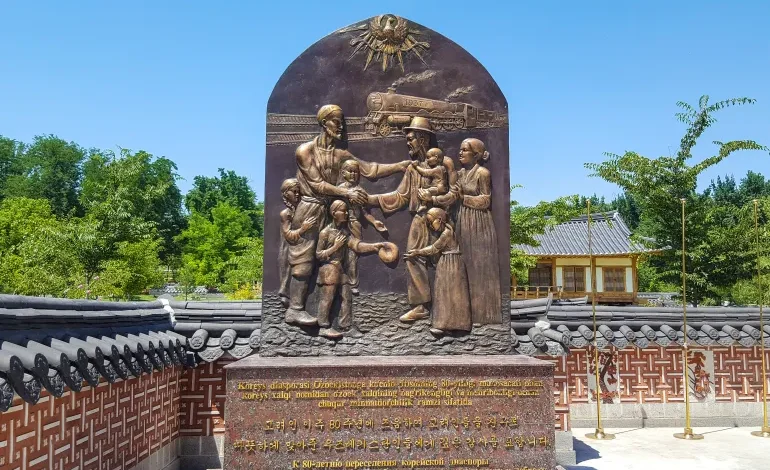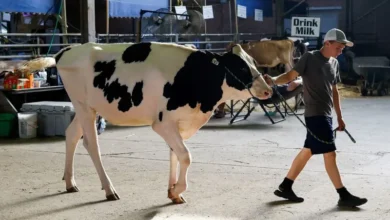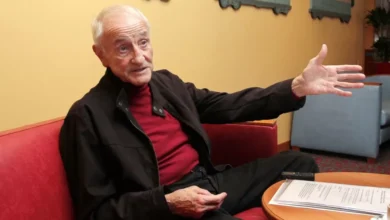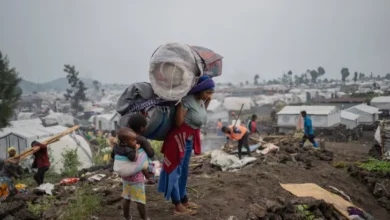Koreans in Uzbekistan: K-pop and a brewing cultural clash

In the wooden drawers and cabinets that run the full length of his living room, Viktor An, 77, is rummaging through history. His jumbled apartment, a few steps up the stairwell of a Soviet-era block in a leafy outer suburb of Tashkent, is a messily kept archive of his life’s work photographing the Korean diaspora of Central Asia, known as Koryo-saram.
An’s parents were born in Primorsky Krai, in the Siberian far-east of the then-USSR, where a large number of Koreans from the north of the peninsula had migrated since the late 19th century. But their generation would mark the end of that great migration and the beginning of another.
Growing xenophobia and suspicions that they might be spying for the Japanese empire culminated in a decree, signed by Soviet leader Joseph Stalin in 1937, to deport about 172,000 Koreans to the Soviet republics of Kazakhstan and Uzbekistan.
An was born in Uzbekistan about a decade later, and studied hydraulic engineering before stints as a mechanic, radio and cinema technician, and later – unsuccessfully – as a farmer of onions and watermelons. It wasn’t until his 30s that he found his calling as a photographer for the Lenin Kichi (Lenin’s Banner), a Korean-language newspaper based in Almaty, Kazakhstan.
During the following decades, he travelled across Central Asia, documenting harvests, holidays, folk concerts and the everyday life of the Korean inhabitants.
A wiry figure who smiles through a thick white goatee, An darts about his apartment. His loose brown fleece is a blur as he quickly makes tea in the kitchen, points out his parents in a photo on the wall, leafs through piles of yellowed newsprint and navigates around a large sculpture made of old camera flashes.
He gestures towards one photo from the early 1990s, of two men beating a trough of rice to make tteok, a Korean rice cake – a captured moment in time. “This moment, I saved how it was before,” he says.
Following the collapse of the USSR, his newspaper was renamed Koryo Ilbo (Korean Diary). It began to print stories in Russian as well as in Korean, a sign that many of its Koryo-saram readers had assimilated to the point of losing Korean as well as their distinctive spoken dialect, Koryo-mar.
“Because this dialect is not written, it’s disappearing,” he tells Al Jazeera. “Especially with the old generation … because the new generation doesn’t know it.”
Today, An is a fine art photographer, and has exhibited in South Korea and across Europe.
His career turn began at the same time as liberalising reforms approved by Mikhail Gorbachev in the 1980s opened up more space for individual freedoms and criticism of the government. New access to classified historical archives in 1991 exposed many atrocities, especially those committed under Stalin’s rule. Finally, the full scale of the deportation of Koreans from Siberia to Central Asia was revealed.
“Of course, we knew that some people had been deported and some people were under repression, but we didn’t know how many,” he says.
An opens a bilingual monograph of his work to the page containing his first artistic composition, from 1988, which shows a triangle-shaped Soviet envelope placed near a window. Light streams into the dark room, which is caked in dust and cobwebs. For An, it speaks to how some stories, like those of the deportees, remain forgotten or untold.
The ‘Korean wave’
There are about 500,000 Koryo-saram in the former Soviet Union today, but the subjects of An’s old photos, like the hatmakers and peasant farmers, have all but disappeared.
The cultural assimilation of the Koryo-saram, which had begun in Siberia, progressed in their new surroundings. Koryo-mar, which was influenced by Russian, and later Uzbek and Kazakh, began to decline as early as the 1960s, and is now regarded as endangered. Russian became the primary language of education, work, literature, and even domestic life.
Koryo-saram culture persists today through certain customs, like the honouring of elders, preparation of Korean food, and celebration of holidays like Seollal, the Korean New Year. Some have diverged significantly from South Korea’s. The autumn festival of Chuseok is a joyful harvest celebration on the peninsula, but a comparably sombre affair in Central Asia.
However, these fading traditions have crashed headlong into a new trend – the so-called “Korean Wave”; the global explosion in popularity of South Korean pop culture.
Now, “K-pop” dance shows take place in cafes across Tashkent and visitors to the capital can buy Korean corn dogs from a food truck just a stone’s throw from the statue of the 14th century Turco-Mongol conqueror, Timur the Great.
The sudden enthusiasm for South Korean cultural exports, even among ethnic Uzbeks, has further complicated the identities of the Koryo-saram, both as a group and as individuals. Some see it as a welcome opportunity to reconcile two very distinct Korean cultures, while others think South Korean identity could supplant their own.
During a warm evening at the King Sejong Institute in Tashkent, several classrooms arranged around a central courtyard are still filled with dozens of teenagers, hunkered over their Korean language textbooks.
Just six years ago, the cultural centre, which runs language courses and is funded by South Korea, had about 300 students. Now that number has doubled. The institute has already set up another centre, and plans a third. Meanwhile, private schools and local branches of Korean universities teach many more.










